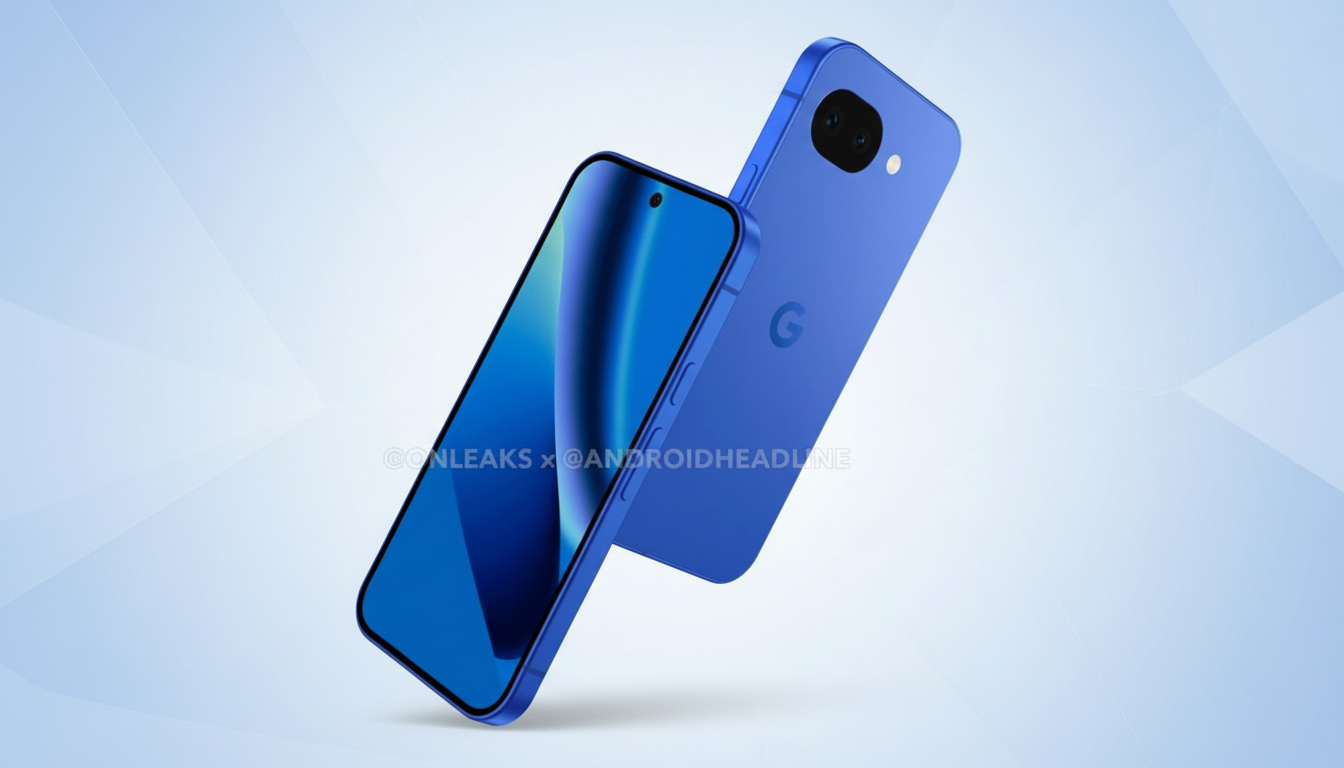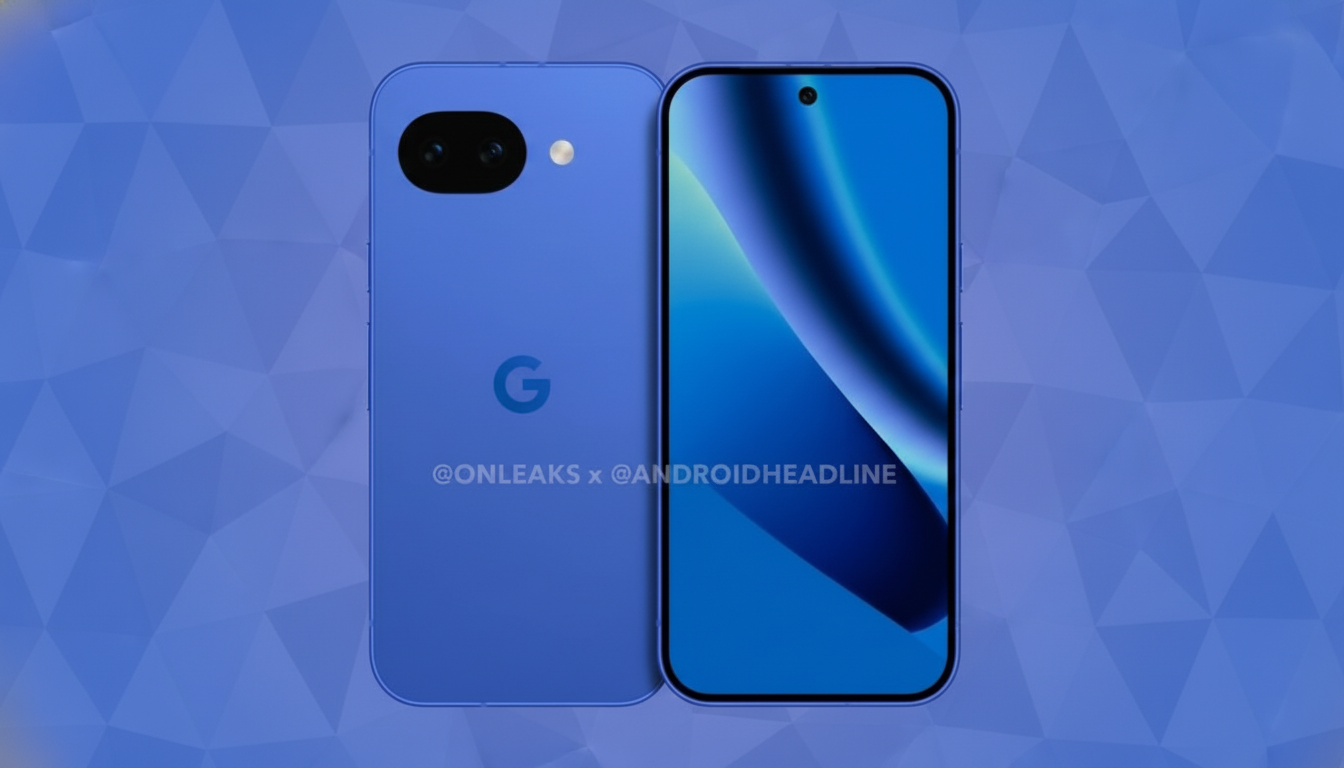New CAD-based renders show a Pixel 10a that looks almost identical to the previous year, and so we can expect another iterative 12 months for Google’s least expensive Pixel.
Those images were shared on Monday by the prolific tipster OnLeaks via Android Headlines, and show a device with near-identical dimensions and roughly the same dual-camera layout and flat-sided, matte plastic feel that the Pixel 9a stuck to.

What the Pixel 10a renders reveal about the design
The leaked model comes with a 6.2-inch display and has dimensions of around 153.9 x 72.9 x 9 mm, which is almost the same as the previous generation.
The familiar cutout is notable for what it doesn’t include: no stretched camera bar, just a tiny, pill-shaped camera island in the top corner. The power button is located above the volume rocker on the right edge, so Google’s one-hand-friendly control layout lives on.
The back seems to carry on with a rugged plastic finish — anything less than that wouldn’t be sensible for a phone meant to shrug off daily knocks and scrapes — while the frame’s squared-off lines help keep the overall look fresh and modern. The renders depict a bluish color, which is similar to the Indigo shade we’ve seen on higher-end Pixels before — but colorways always change between now and when retail units ship, so don’t get too attached to anything you see here.
One interesting little detail is the exposed SIM tray. Not an actual confirmation of future hardware, its inclusion does indicate that Google might opt to keep some kind of a physical SIM option for wider global compatibility. That would dovetail nicely with buyer realities in many markets where the infrastructure for eSIM is still playing catch-up; industry bodies such as the GSMA have pointed to fast-growing take-up of eSIM, but physical SIMs are still very much alive among budget and mid-range devices.
Hardware and performance expectations for Pixel 10a
Inside you’ll find that the Pixel 10a is expected to reuse Google’s Tensor G4, and it will supposedly belong to the same generation as that on the latest Pixels, with a bit of extra clock speed. In real terms, a mild frequency bump usually results in a minimal single-digit performance increase — particularly in short bursts with manageable thermals. Expect that additional headroom to be put to good use serving up AI-forward features such as on-device transcription, call screening, and photo edits that leverage Google’s machine learning stack.
Battery rumors suggest a repeat of the 5,100mAh pack or even larger. For comparison, 5,000mAh is the typical maximum in midrange handsets — and direct competitors such as Samsung’s Galaxy A55 — so anything at or above that mark puts the Pixel 10a on track for all-day stamina. The 6.2-inch screen size, meanwhile, helps it retain a place among the midsize offerings in today’s Android field — which could be useful to people who want pocketable without getting all the way into truly small.

Cameras remain the big variable. While the renders confirm dual rear cameras, sensor details and Google’s potential processing tweaks are unclear. The A series has traditionally relied on computational photography to remain competitive; it hasn’t needed the most advanced hardware, because image quality has been a more reliable strength.
A deliberate design strategy that prioritizes continuity
Design continuity isn’t just aesthetic — it’s economics. Reusing core tooling, keeping the chassis dimensions similar, and avoiding major mechanical overhauls can mitigate manufacturing complexity and ease some of the reasons why prices need to be kept honest. Analysts have long pointed out that midrange phone buyers care more about battery life, camera reliability and software support than they do about radical new looks — a calculation that Google’s move appears to reflect.
There’s a practical, if less glamorous, upside for owners and accessory makers: near-identical footprints can make case compatibility easier to ensure, and third-party support simpler to provide. Considering Google’s software history — fast security patches, years of OS support and a buffet of AI features — the Pixel 4a’s formula appears to be catered toward solid value, not spec-sheet fireworks.
What to watch next as Pixel 10a moves toward launch
If it’s not great, that information has to be weighed in the context of real-world samples and is compounded by a hefty list of open questions:
- Charging speeds
- Official IP rating
- Camera sensor specifics
- Whether the physical SIM tray makes it onto retail shelves
Certification filings, retailer listings, and regional approvals frequently appear before launch and are likely to clear that up. There have already been rumors of new wallpapers linked to the model, often a clue that the pipeline is flowing.
If the renders are accurate, then the Pixel 10a will double down on the 9a’s priorities: a familiar design, solid (but efficient) performance and Google’s software advantage. For those who prioritize dependability over re-creation, that may be just the point.

